The Great Gray Owl lives and thrives in the dense, whispering conifers of the northern forest. Perched gracefully on a pine branch with its massive wings neatly tucked at its sides, the owl surveys its domain with piercing eyes that seem to hold centuries of secrets.
As twilight casts long, dancing shadows over the snow-blanketed forest floor, the owl’s distinctive facial disc catches even the faintest rustle beneath the surface—a scurrying vole, oblivious to the attentive ears tracking its every move. With a barely perceptible flutter, the Great Gray Owl takes flight into the frigid air. These owls glide like a ghosts between the trees, and you need to pay close attention to spot one!
1. Masters of Stealth
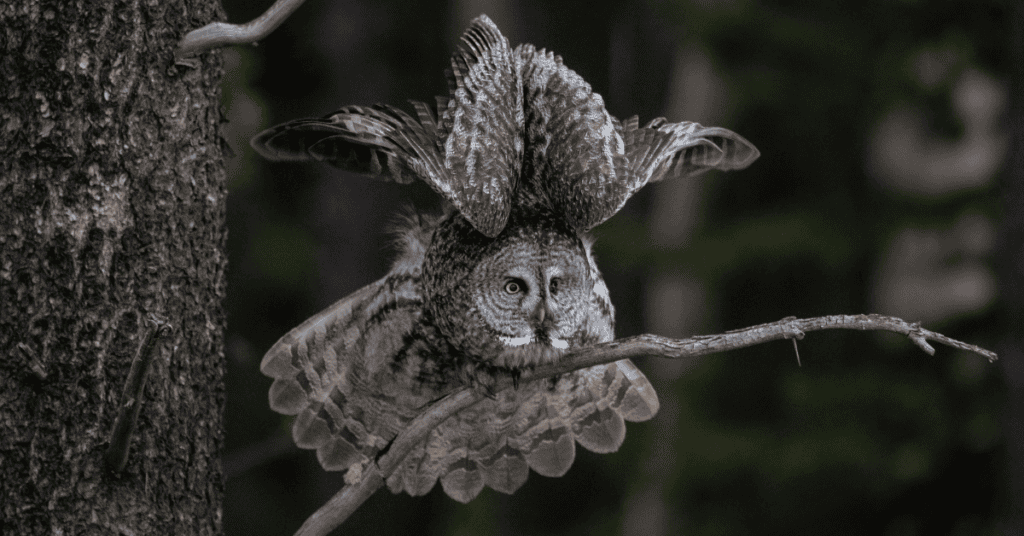
The Great Gray Owl, much like its owl counterparts, is celebrated for its almost silent flight—a crucial trait for hunting.
- Wing Adaptation: Its wings feature comb-like serrations that break up turbulence, reducing noise significantly.
- Feather Structure: Their soft, but dense velvety surface feathers absorb sounds. This is how they have near-silent movement.
- Hunting Technique: Impressively, it can pinpoint prey hidden beneath a blanket of snow. Watching them swoop down without a sound, is impressive.
2. Impressive Size
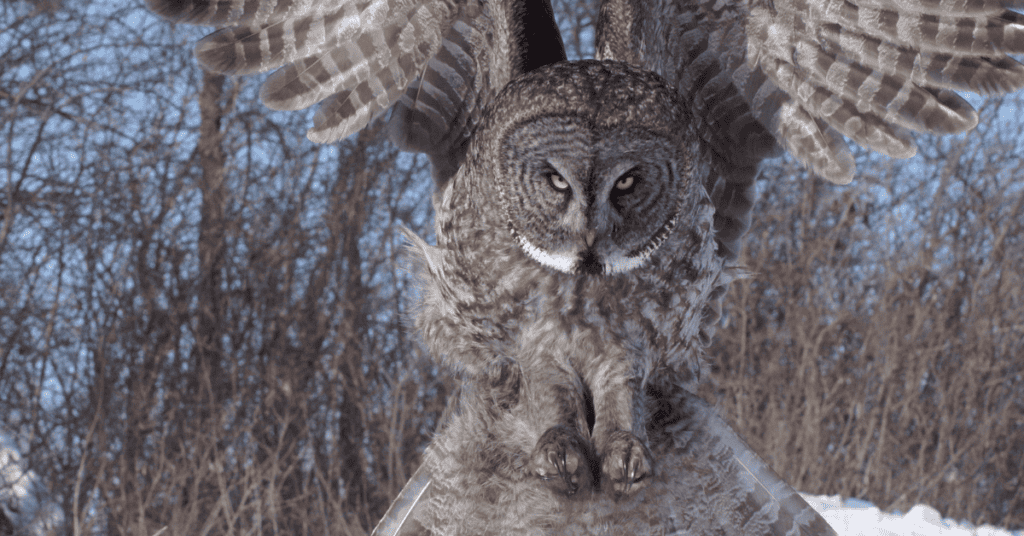
Among the largest owls, the Great Gray Owl stands out with its notable dimensions.
- Height and Wingspan: They are about 32 inches in height. Plus their wingspan stretches nearly 5 feet. This allows them to glide effortlessly across the forest canopy.
- Comparative Size: Its impressive stature allows it to dominate its woodland realm, often appearing taller than many common yard markers.
- Deceptive Bulk: Despite its large appearance, the owl’s body is surprisingly light. The Great Gray’s weigh less than many of their smaller raptor cousins.
3. Winter Warriors
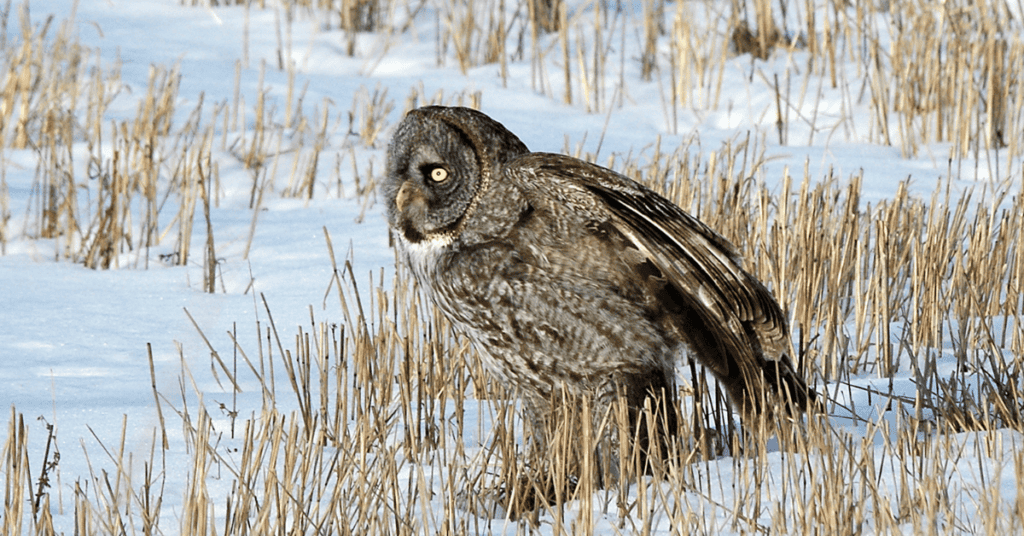
Remarkably adapted to the cold, the Great Gray Owl thrives even in the harshest winter conditions.
- Insulation: Its dense feathering acts as a natural shield against subzero temperatures.
- Adaptability: Instead of migrating south, it remains in its boreal habitat all year. Which shows just how resilient and cold tolerant they are.
- Prey Tactics: Notably, it can detect and capture rodents hidden beneath layers of snow, even when the snow exceeds two feet in depth.
4. Daytime Hunters
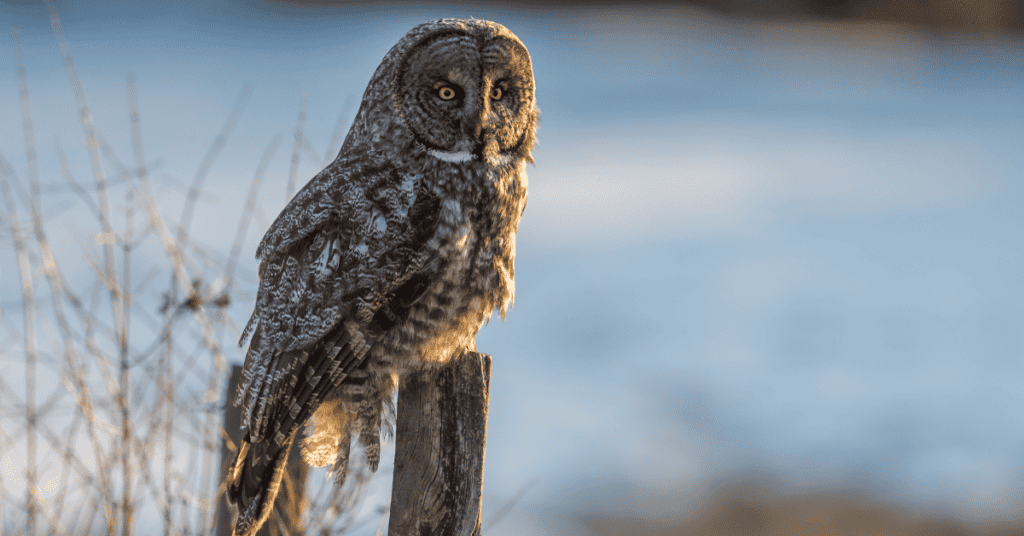
Interestingly, unlike many of its nocturnal relatives, the Great Gray Owl often takes advantage of daylight.
- Diet Needs: Its daytime hunting habits are largely influenced by the activity patterns of its prey.
- Visual Acuity: Exceptional vision during the day enables the Great Gray to spot even the slightest movements.
- Predatory Behavior: You might often see this owl perched on low branches. They are intently scanning the surroundings for their next meal.
5. Iconic Facial Disc of the Great Gray
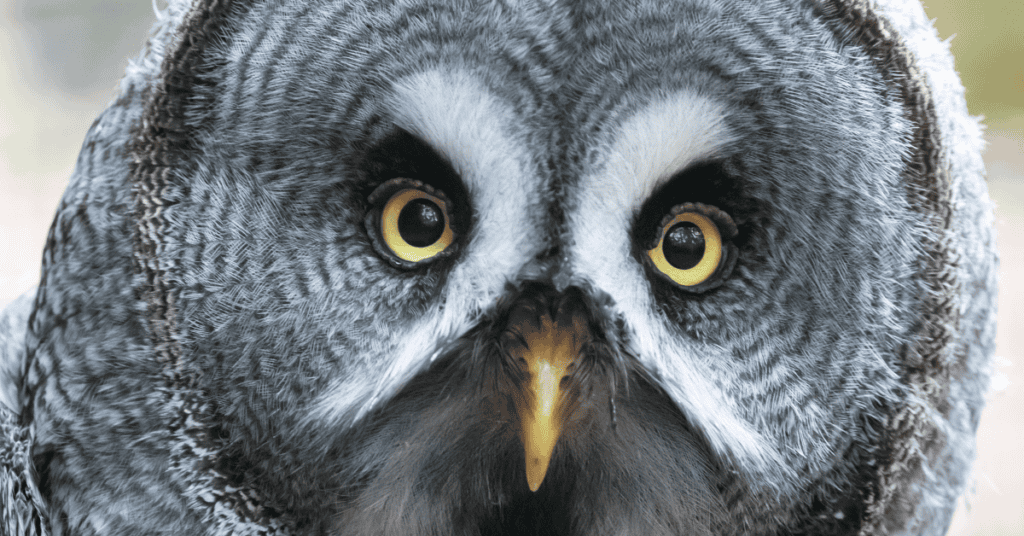
One of the coolest features of the Great Gray Owl is its large, distinctive facial disc.
- Sound Focus: This disc functions like a radar dish, channeling sound directly to its keen ears.
- Feather Alignment: The arrangement of its facial feathers further refines this auditory capability, allowing it to locate prey even in complete darkness.
6. Nomadic Tendencies
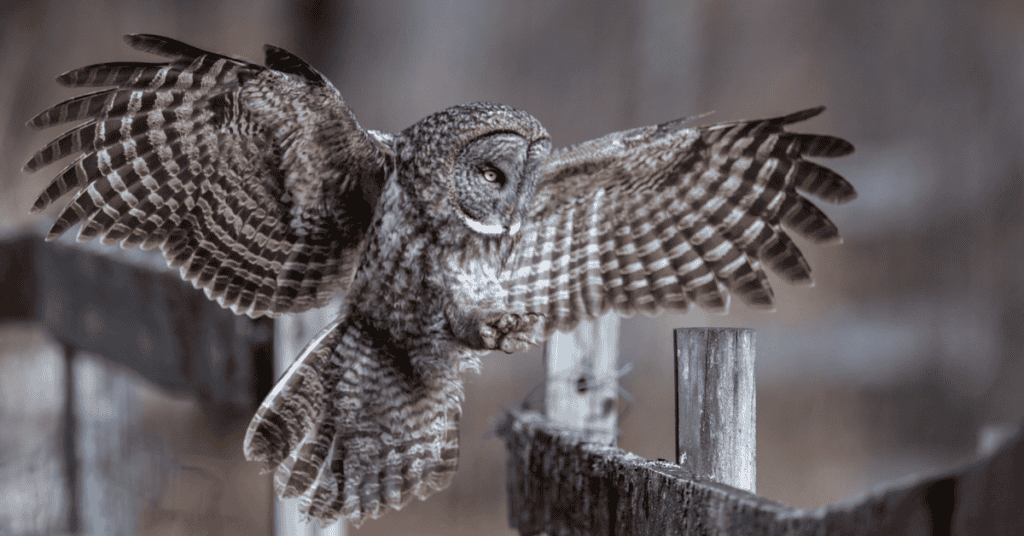
The Great Gray Owl is known for its unpredictable, nomadic movements. So much of their life is spent moving across vast territories following food sources.
- Food Availability: Its roaming behavior is largely driven by the search for abundant prey.
- Territorial Range: When food is scarce, it can cover vast areas, adapting its range accordingly.
- Seasonal Shifts: So much of their movements coincide with seasonal fluctuations in prey populations. The moveeent across territoiries ensures its ability to eat and survive throughout the year.
7. Longevity in the Wild
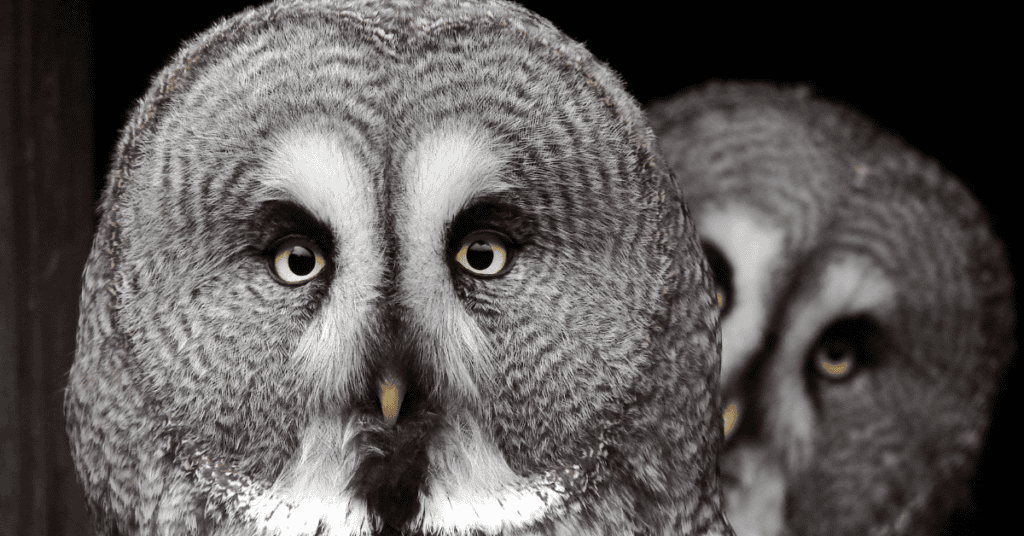
With a life span that can exceed a decade, the Great Gray Owl demonstrates impressive longevity in the wild.
- Life Span Factors: Did you know that the survival of the Great Gray is influenced by both predators and the availability of food?
- Survival Skills: Over time, mature owls refine their tactics. However they easily become adept at evading threats and capitalizing on hunting opportunities.
- Reproductive Contribution: In general a longer life increases the chances for more baby owls. In other words, this helps maintain stable populations.
8. Solitary by Nature
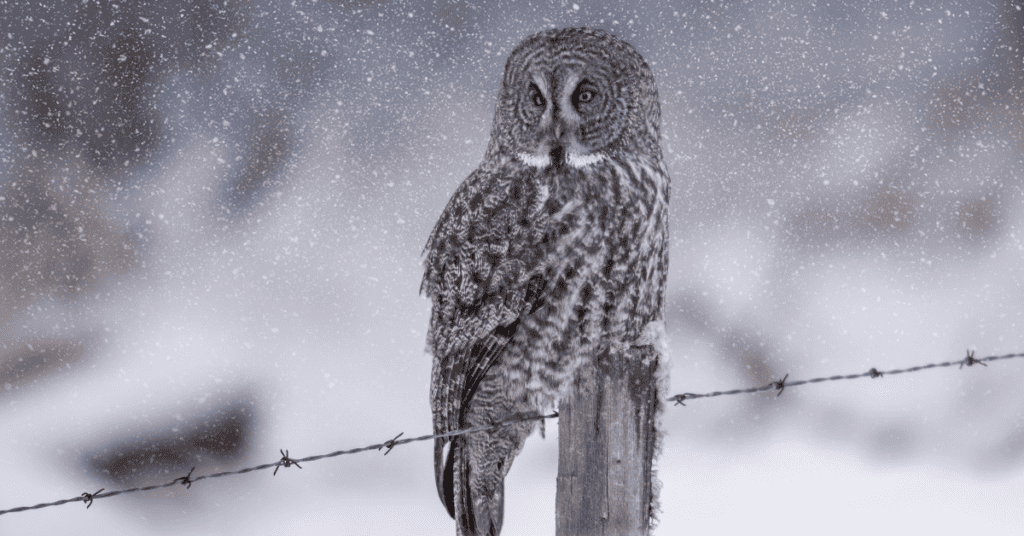
Typically, the Great Gray Owl leads a solitary life. Many time they will only hang out with others only during the mating season.
- Territorial Instincts: Each owl maintains its own hunting territory. They don’t usually overlap with other owls.
- Limited Interaction: Social interactions are generally reserved for the breeding period. So when courtship calls their social interactions will become more frequent.
- Mating Rituals: Their unique mating rituals, characterized by specific calls and displays, highlight the complexity of their behavior.
9. Specialized Vocalizations of the Great Gray Owl
reference for audio on great grey owl Ulf Elman, XC884404. Accessible at www.xeno-canto.org/884404.
Communication is another fun fact of the Great Gray Owl’s life.
- Warning Calls: It uses sharp, clear calls to mark its territory and ward off potential intruders.
- Mating Calls: Males emit deep, resonant hoots designed to attract females during the breeding season.
- Parental Communication: Gentle, softer sounds are used by parents to communicate with their chicks. These soft sounds help shape and guide the young owls. And make them feel nurtured.
10. Conservation Status of the Great Gray Owl

Although the Great Gray Owl is not currently classified as endangered, it still faces significant challenges.
- Habitat Protection: Protecting its nesting and hunting grounds is essential for any wildlife. Conservation efforts are key to preserving the owl’s environment.
- Climate Impact: Rising temperatures and changing climates can disrupt the delicate balance of its prey populations.
- Human Interaction: Thoughtful forestry practices and responsible land use are crucial to mitigating the negative impacts on its habitat.